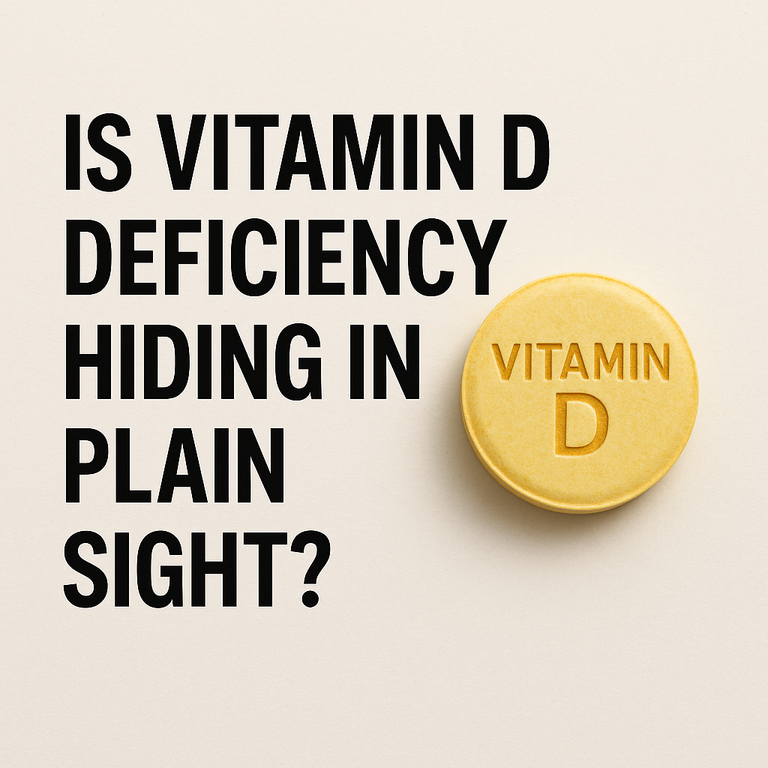Is Vitamin D Deficiency Hiding in Plain Sight?

We think we know vitamins. We swallow them with breakfast, we hear different health gurus tell us about multivitamins and too many people are now selling supplements. In fact there is a whole ecosystem that caters to individuals who provide health advice based on so called vitamin deficiencies, and most times we don't give them second thought —until something goes wrong.
Among the many vitamins, Vitamin D stands out: the so-called “sunshine vitamin,” a simple supplement that seems to promise everything from stronger bones to improved mood. But is the story as simple as it seems?
Recent years have seen a quiet surge of interest in Vitamin D. Doctors test for it more often. Supplements crowd pharmacy shelves. And yet, the medical community remains strangely split. Some treat Vitamin D deficiency like a looming public health threat. Others wave it off as over diagnosed, over supplemented, and overhyped. Who's right?
Here’s the thing: Vitamin D deficiency doesn’t always announce itself. There’s no bright red rash, no glaring abnormal lab that immediately sets off alarms. Instead, it might come as vague fatigue. Achy bones. Low mood. Muscle weakness. Joint pain. All symptoms that are so easy to chalk up to a dozen other things—aging, stress, arthritis, depression.
How many of us, right now, are walking around Vitamin D deficient and have no idea?
And that leads to a deeper question—should we be testing more routinely for it? Right now, testing for Vitamin D is often reserved for people with clear risk factors: darker skin, limited sun exposure, malabsorption issues, or certain chronic illnesses. But what if this selective testing misses the broader picture? What if the so-called “normal range” isn’t capturing the reality for most people?
We don’t yet know how to draw the line between “low enough to matter” and “just a bit low.” Some guidelines suggest levels below 30 nmol/L are concerning. Others argue for thresholds twice as high. And what if Vitamin D doesn’t just prevent rickets and osteoporosis—but also affects immunity, mood, or inflammation in ways we don’t fully grasp?
Take arthritis, for example. Several studies suggest an association between low Vitamin D and joint pain. But association isn’t causation. Could low D be a cause, a consequence, or just a bystander in the crowd of chronic illness? We don’t know. But in a world where autoimmune conditions are on the rise and pain often defies explanation, isn’t it worth asking?
This isn’t a call to start popping pills indiscriminately. Over-supplementation can cause real harm—calcium imbalance, kidney stones, toxicity. And yet, the opposite problem—undiagnosed deficiency—is harder to see and arguably easier to ignore.
So what’s the average person to do?
First, don’t assume you’re getting enough. If you live in northern latitudes, spend most of your time indoors, or have darker skin, your natural production of Vitamin D from sunlight may be limited. If you’re often tired, achy, or down, talk to your doctor—not just about your mood or joints, but about your Vitamin D level too. And if you’re skeptical of supplements, remember: this isn’t just about wellness culture or fads. It’s about whether something subtle and correctable could be contributing to how you feel every day.
There’s something deeply human about wanting a simple answer—a single vitamin, a single fix. But science rarely works that way. What we need isn’t hype or fear, but curiosity. Humility. A willingness to ask: Are we missing something? Is Vitamin D deficiency more common than we care to admit—and are its effects more far-reaching than we yet understand?
In the end, maybe the point isn’t to find the final word on Vitamin D. Maybe the point is simply this: to keep asking better questions.
